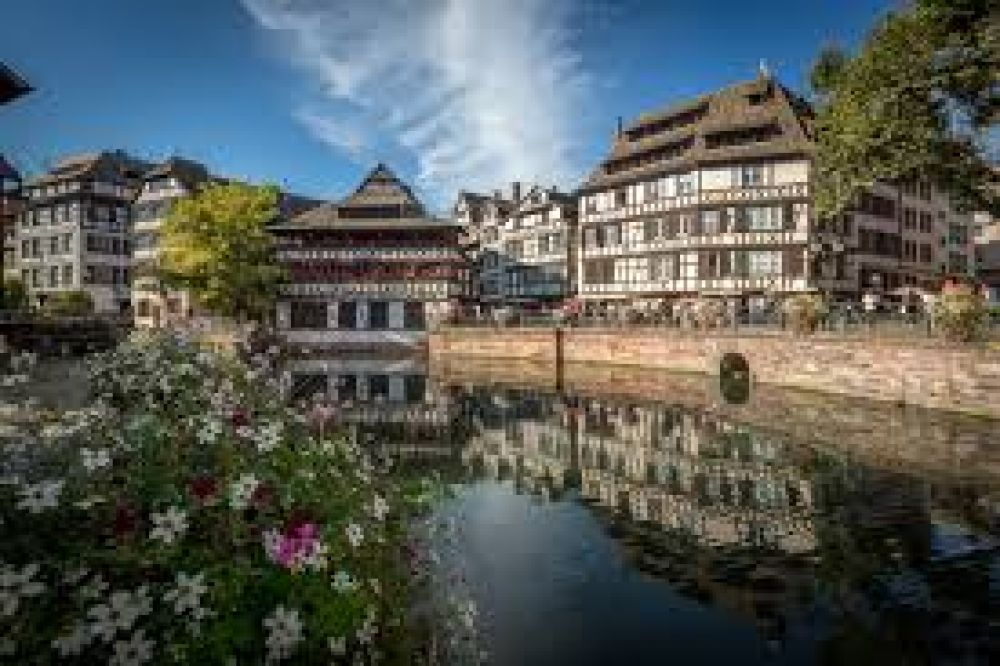

La Petite France is an iconic quarter located in the heart of Strasbourg, sitting quaintly at the crossroads of the River Ill and the Canal du Faux-Rempart. Known for its picturesque medieval streets, traditional half-timbered houses, and canals, it is a focal point of Alsatian heritage and a must-visit destination for anyone traveling to the region of Alsace, France.
Dating back to the Middle Ages, La Petite France was primarily an area of mills and tanneries, important for the thriving local economy of the time. The district got its name, according to one theory, from the hospice of the "syphilitic women" set up in the 15th century, where patients were cared for by the nuns. This medical facility was colloquially referred to as "La Petite France". Another theory claims the name derives from the small area of France that soldiers could visit without risking prosecution under German laws, as Strasbourg has fluctuated between French and German control over the centuries.
Initially, outsiders did not frequent La Petite France due to its associations with industry and the tanning process, which was far from glamorous. However, during the 18th and 19th centuries, as the industrial functions of the area gradually declined, people began to see beyond the factories to the intrinsic charm of the district. The area's unique architecture and maze of narrow, winding streets began to attract tourists and artists, inspiring a movement to preserve this rich historical backdrop.
With the advent of the railway in the 19th century, Strasbourg saw a significant rise in visitors. Soon, La Petite France became a picturesque highlight for travelers from all over the world. Restoration and conservation efforts throughout the 20th century ensured that La Petite France retained its authentic old-world charm, despite the increasing pressures of modern tourism.
La Petite France TodayIn the present day, La Petite France is synonymous with Strasbourg tourism. It's a UNESCO World Heritage site, acclaimed not only for its beauty but also for its historical importance. As visitors stroll along cobblestoned streets, dine in charming bistros, and cruise the canals, they soak in the history that each nook and cranny of this charming quarter offers.
Latest Tourism TrendsRecent tourism trends have seen a push towards sustainable and immersive travel experiences. Visitors to La Petite France can enjoy guided walking tours, which highlight not only the area's history but also its cultural significance. Many tour operators focus on small-group experiences to minimize impact while providing a deeper understanding of the area's legacy.
Seasonal activities, like Christmas markets, entice tourists with local crafts and Alsatian delicacies, offering an authentic taste of Strasbourg’s festive culture. Moreover, virtual reality experiences and multimedia guides are becoming popular for those who wish to delve deeper into the history of La Petite France without encroaching on the tranquility of the space.
Eco-conscious travelers will appreciate Strasbourg’s commitment to reducing its environmental footprint, with La Petite France being a key area of focus. The integration of eco-friendly practices in local businesses, from hotels to eateries, reflects the growing trend of responsible tourism.
In conclusion, La Petite France continues to enchant scores of visitors each year, maintaining its reputation as a historic gem within the cosmopolitan city of Strasbourg. The delicate balance of preserving its storied past while embracing modern tourism trends ensures that La Petite France remains a treasured destination now and in the future.